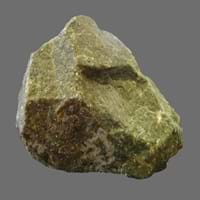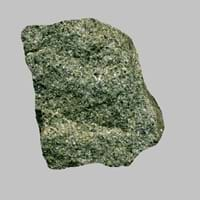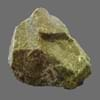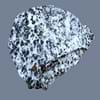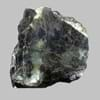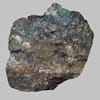Definition
Dunite is a green to brownish coarse-grained igneous rock mainly consisting of olivine
Greywacke is defined as a dark coarse-grained sandstone rock which contains more than 15 per cent clay
Origin
New Zealand
Unknown
Discoverer
Ferdinand von Hochstetter
Unknown
Etymology
From the name of Dun Mountain, New Zealand, + -ite1
From German Grauwacke, from grau grey + wacke
Class
Igneous Rocks
Sedimentary Rocks
Sub-Class
Durable Rock, Medium Hardness Rock
Durable Rock, Hard Rock
Group
Plutonic
Not Applicable
Other Categories
Coarse Grained Rock, Opaque Rock
Fine Grained Rock, Opaque Rock
Texture
Phaneritic
Clastic
Color
Dark Greenish - Grey
Beige, Black, Brown, Colourless, Cream, Dark Brown, Green, Grey, Light Green, Light to Dark Grey, Pink, Red, White, Yellow
Durability
Durable
Durable
Scratch Resistant
Yes
Yes
Appearance
Rough and Shiny
Dull
Interior Uses
Decorative Aggregates, Interior Decoration
Decorative Aggregates, Floor Tiles, Flooring, Homes, Interior Decoration
Exterior Uses
As Building Stone, As Facing Stone, Garden Decoration, Paving Stone
As Building Stone, As Facing Stone, Garden Decoration, Office Buildings, Paving Stone
Other Architectural Uses
Curbing
Curbing, Whetstones
Construction Industry
As Dimension Stone, Cement Manufacture, Construction Aggregate, for Road Aggregate, Making natural cement, Raw material for the manufacture of mortar
Building houses or walls, Cement Manufacture, Construction Aggregate, for Road Aggregate, Raw material for the manufacture of mortar
Medical Industry
Not Yet Used
Not Yet Used
Antiquity Uses
Artifacts, Monuments, Sculpture, Small Figurines
Artifacts, Sculpture, Small Figurines
Commercial Uses
Creating Artwork, Gemstone, Jewelry, Source of Chromite, Platinum, Nickel and Garnet, Source of Diamonds
As armour rock for sea walls, Petroleum reservoirs, Sea Defence, Tombstones
Types
Not Available
Not Available
Features
Constitutes upper part of the Earth's mantle, Generally rough to touch, Host rock for Diamond, Is one of the oldest rock
Available in Lots of Colors and Patterns, Generally rough to touch, Non-vesicular, Veined
Archaeological Significance
Monuments
Used
Not Yet Used
Famous Monuments
Data Not Available
Not Applicable
Famous Sculptures
Data Not Available
Data Not Available
Pictographs
Used
Not Used
Petroglyphs
Used
Not Used
Formation
Dunite is a plutonic ultramafic igneous rock consisting almost m olivine. It can be formed in two ways.
Graywacke rock is a type of sedimentary rock, which is also known as immature sandstone, which is indurated, dark grey and consisting of poorly sorted angular to sub-angular, sand-sized grains.
Mineral Content
Amphibole, Chromite, Garnet, Magnesium, Olivine, Phlogopite, Plagioclase, Pyroxene
Augite, Biotite, Calcite, Chlorite, Clay, Clay Minerals, Feldspar, Micas, Muscovite or Illite, Plagioclase, Pyroxene, Quartz
Compound Content
Ca, CaO, Fe, Potassium, Silicon Dioxide, Sodium, Titanium Dioxide
Aluminium Oxide, NaCl, CaO, Chromium(III) Oxide, Iron(III) Oxide, FeO, Potassium Oxide, Magnesium Carbonate, MgO, MnO, Sodium Oxide, Phosphorus Pentoxide, Silicon Dioxide, Titanium Dioxide
Types of Metamorphism
Burial Metamorphism, Cataclastic Metamorphism, Contact Metamorphism
Not Applicable
Types of Weathering
Biological Weathering, Chemical Weathering, Mechanical Weathering
Biological Weathering, Chemical Weathering
Types of Erosion
Coastal Erosion, Glacier Erosion, Water Erosion
Coastal Erosion, Sea Erosion, Wind Erosion
Grain Size
Coarse Grained
Angular and Fine
Fracture
Irregular
Conchoidal
Porosity
Less Porous
Highly Porous
Compressive Strength
Not Available
Cleavage
Imperfect
Perfect
Specific Gravity
3-3.01
2.2-2.8
Transparency
Translucent to Opaque
Opaque
Density
2.84-2.85 g/cm3
2.6-2.61 g/cm3
Specific Heat Capacity
Not Available
Resistance
Heat Resistant, Pressure Resistant, Wear Resistant
Heat Resistant, Impact Resistant, Pressure Resistant
Deposits in Eastern Continents
Asia
China, India, Indonesia, Kazakhstan, Russia, South Korea, Thailand, Turkey
China, India, Kazakhstan, Mongolia, Russia, Uzbekistan
Africa
Morocco, South Africa
Namibia, Nigeria, South Africa
Europe
Finland, France, Georgia, Germany, Great Britain, Italy, Kazakhstan, Netherlands, Norway, Spain, Switzerland, Venezuela
Austria, Denmark, Germany, Great Britain, Netherlands, Norway, Poland, Sweden, Switzerland, United Kingdom
Others
Not Yet Found
Greenland
Deposits in Western Continents
North America
Canada, USA
Canada, USA
South America
Argentina, Brazil, Colombia, Ecuador, Venezuela
Brazil
Deposits in Oceania Continent
Australia
New Zealand, Western Australia
New South Wales, New Zealand
All about Dunite and Greywacke Properties
Know all about Dunite and Greywacke properties here. All properties of rocks are important as they define the type of rock and its application. Dunite belongs to Igneous Rocks while Greywacke belongs to Sedimentary Rocks.Texture of Dunite is Phaneritic whereas that of Greywacke is Clastic. Dunite appears Rough and Shiny and Greywacke appears Dull. The luster of Dunite is shiny while that of Greywacke is dull. Dunite is available in dark greenish - grey colors whereas Greywacke is available in beige, black, brown, colourless, cream, dark brown, green, grey, light green, light to dark grey, pink, red, white, yellow colors. The commercial uses of Dunite are creating artwork, gemstone, jewelry, source of chromite, platinum, nickel and garnet, source of diamonds and that of Greywacke are as armour rock for sea walls, petroleum reservoirs, sea defence, tombstones.
